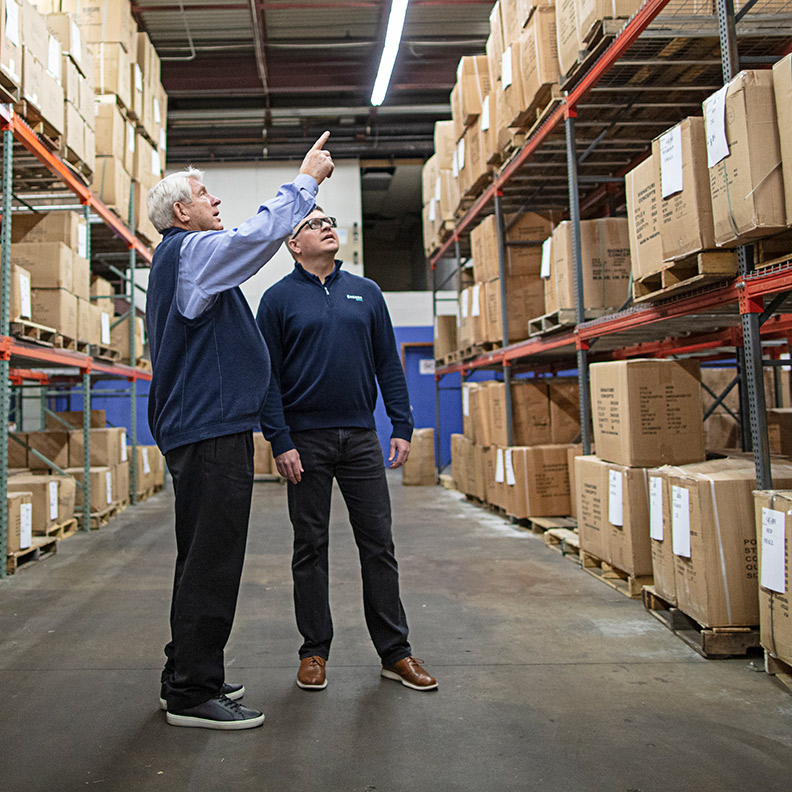Businesses across industries tend to be hesitant or skeptical about investing in new technologies or the infrastructure needed to support them. But dealing with the impact of COVID-19 is forcing manufacturers to think digitally. With widespread social distancing, quarantines, extended school closures and travel restrictions due to COVID-19, manufacturers are rethinking their approach to digital technologies.
While necessity may drive adoption at first, manufacturers will likely need to innovate and adopt newer technologies to stay competitive and to keep their employees safe in the long-term. This may not be a bad thing. Times of disruption can provide a good opportunity to make bold business decisions by introducing new innovations or more efficient ways of working. Many organizations are often aware of cultural, structural or operational improvements that need to be made but these changes are often not prioritized in a normal economy. With COVID-19, some manufacturers are taking the opportunity of a global disruption to implement a series of initiatives to give them a competitive edge in a post-pandemic economy.
During the COVID-19 lockdown, it was common for companies to search for ways to cut costs and allow their employees to work remotely. One of our clients, a specialty service provider in the Twin Cities, moved their collection of accounts receivable and payments to an Automated Clearing House (ACH) platform to reduce paper costs as well as the need for their accounting staff to go into the office. Another client added a lockbox service to their treasury management services, which freed up time for employees to focus on other more important revenue generating activities. The automated service also sped up customer payment processing because checks are processed right away instead of waiting to be deposited manually.
Another one of our client’s, a manufacturer of building products based in Minneapolis, purchased a new automated production line. The $2 million equipment has created labor savings of approximately $350,000 annually, decreased scrap losses by more than 50 percent, and significantly improved gross margin by around $250,000 annually. Perhaps more importantly, the automated production line helped the manufacturer with its labor shortage problem.
With the automated equipment, the manufacturer was able to retrain and relocate new people to another area of the operation where they were having challenges recruiting skilled talent. Furthermore, the new production line provided increased capacity and eliminated the need to outsource some of its operations and products. Despite a $2 million investment on the automated production line, the new equipment created a significant accelerated depreciation expenses in the first year, which combined with other savings, allowed the manufacturer to easily service the new debt. Although this manufacturing company purchased the production line before the COVID-19 pandemic, this earlier investment helped cushion the financial impact of COVID-19 by providing cost savings in many areas of their operations.
Here are some measures manufacturers can take to remain competitive:
Consider automation and digital technologies. These technologies can decrease worker density throughout your operations and account for labor unpredictability due to social distancing. The manufacturing industry has long favored on-site solutions as a place for storing sensitive manufacturing information. However, adoption of AI and automation can be used to catch unanticipated defects or gaps in quality during production without employees ever having to step into the factory. Digital technologies can provide some level of oversight and normalcy during a time when employees are encouraged to work remotely. In the long term, these technologies will pay dividends in the form of product and process optimization.
Update remote technical capabilities and IT infrastructure. Remote assistance capabilities are important to ensure business continuity of customers and to virtually monitor maintenance and repair needs or reduce unplanned downtime. To comply with health safety guidelines, dispatching field service technicians to address customers’ equipment needs on-site is not always possible. With remote assistance capabilities, manufacturers can access equipment remotely, efficiently and safely.
Adopt a “proactive” rather than “reactive” approach. Using smart diagnostic for predictive maintenance is another way to increase efficiency. Instead of performing preventive maintenance, providing technicians with access to parts inventory optimization and remote troubleshoot tools enables them to take proactive measures. This results in reduced downtime, leading to higher productivity and therefore higher profits.
Outsource office functions, such as check writing and receivables keying. Consider services such as Integrated Receivables, remote deposit, and virtual vault to avoid trips to the post office or bank. These services can help shorten bank processing time and expedite internal processing. For instance, with products like Integrated Payables, you can send one check file to your bank and your bank can work with your vendors to optimize use of electronic payment methods. This can lead to lower costs and allow you to stretch your cash during difficult times.
Postponing investments in digital technology or automation makes financial sense in uncertain times. However, selectively investing in upgrades during this time can be a smart strategy if you have the financial means, one that could certainly have financial payoff in long-term. This is an important conversation to have with your business banker who can help you assess the cost-benefit of a capital investment during COVID-19.
The fate of the future will be divided between businesses that adapt to new ways of operating and those waiting for things to get back to normal. We witnessed it during this global pandemic, with early adopters of AI, automation, and cloud technology being in the best position to continue business and at the same time protect the health of employees. History has proven that short-term measures taken in response to crisis can lead to lasting changes.

